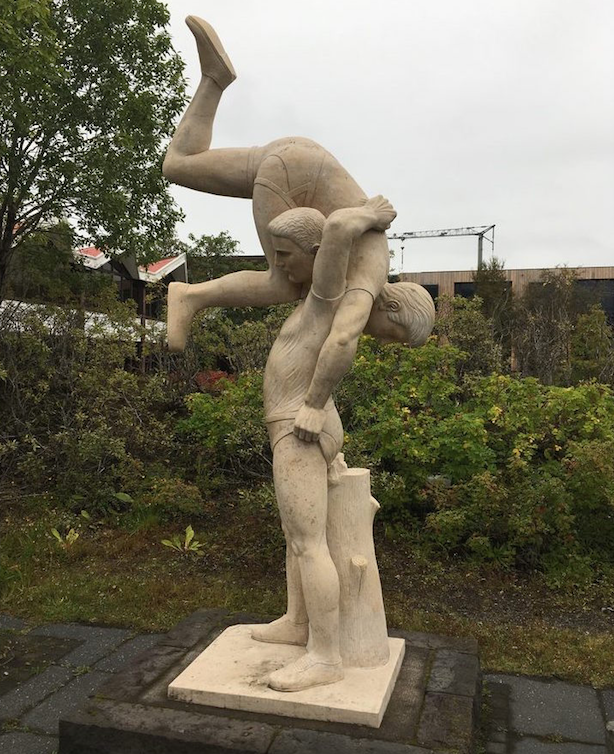About
Glíma, the most widespread sport of the Viking Age, was the foundation of self defense for Viking warriors. Scandinavian children started learning the martial art as early as 6 years old. Its earliest mention comes from a poem about Thor (the Viking god of wrestling) by the 9th-century Norwegian poet Bragi Boddason.
Glíma is practiced in three different styles. The most common form in Sweden and Iceland is called Brokartök (trouser-grip), which focuses on technique rather than strength. Opponents must remain erect and are only permitted to move clockwise around each other, like a waltz.
Glíma is the national sport of Iceland. It’s been taught in Icelandic primary schools since 1987 and the country has held championships since 1906. The winner of the highly celebrated event is called Glímukóngur (Glíma king).
The Geysir Glíma Restaurant has only been around since 2012. The family who owns it uses the space to celebrate and educate diners on the finer points of Glíma, which is now the Icelandic word for “wrestling” or “struggle.”
Sigurdur Greipsson, a famous wrestler and ancestor of the owners, is honored with a statue of two men doing Glíma outside. Inside, there are six televisions that are all dedicated to footage of the sport. The restaurant also displays the Grettisbeltið, a belt given to the winner of the 1906 match, and the oldest trophy in Iceland.
Opponents in a Glíma match are encouraged to look over each other’s shoulders as much as possible, to make moves based on touch rather than sight. The televisions displaying their avoidance of eye contact mirror any awkward dates going on in the restaurant.
Related Tags
Know Before You Go
Drive by car or take a tour bus to see the geysers at Geysir.
Iceland in Winter: Northern Lights & Geothermal Marvels
A land of folklore and myths on a backdrop of remarkable natural wonders.
Book NowCommunity Contributors
Added By
Published
September 8, 2017

























